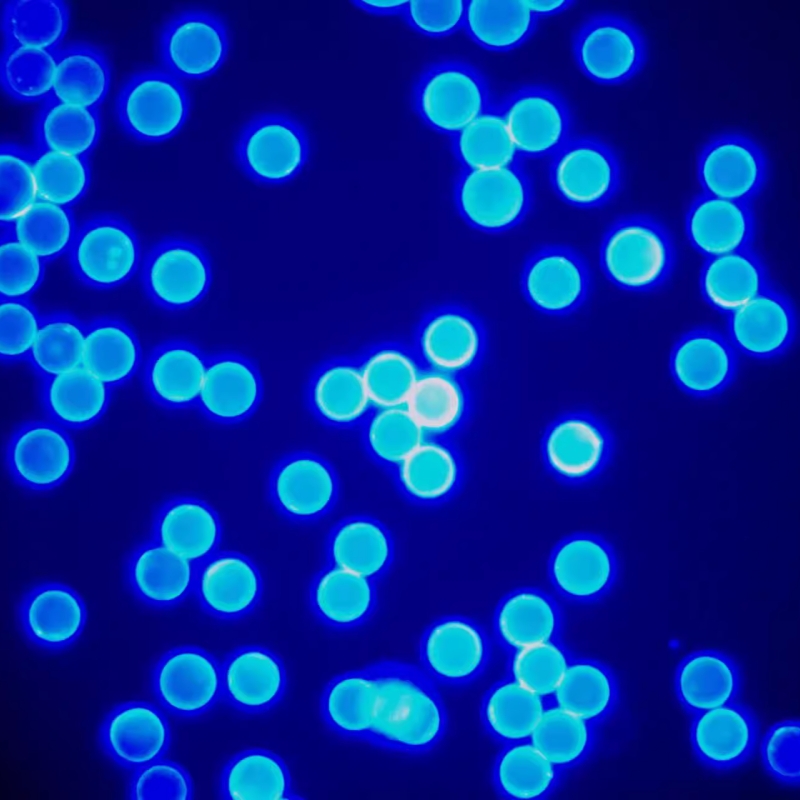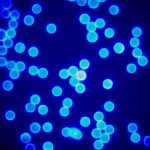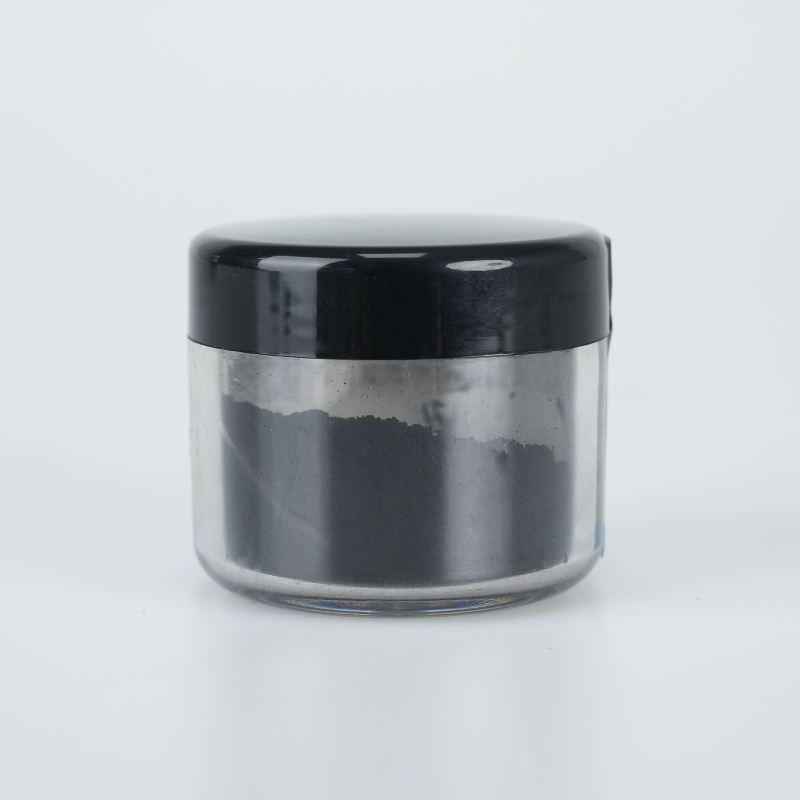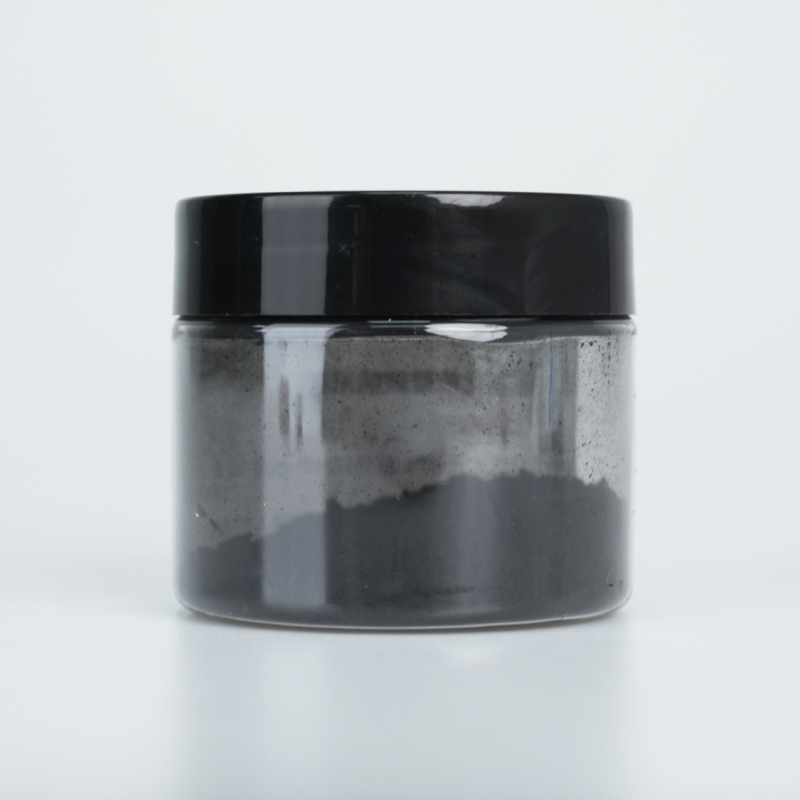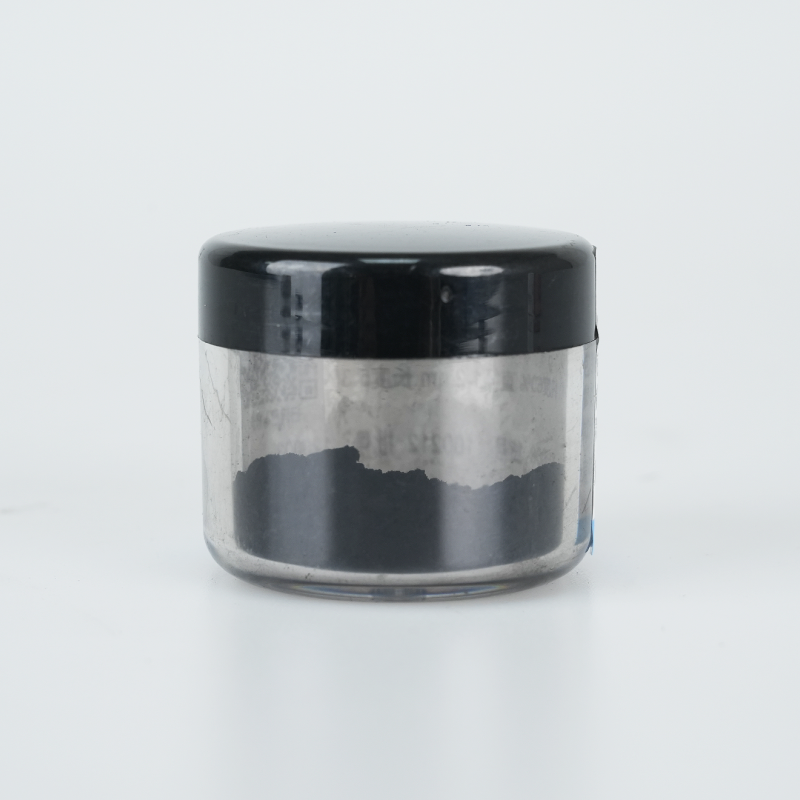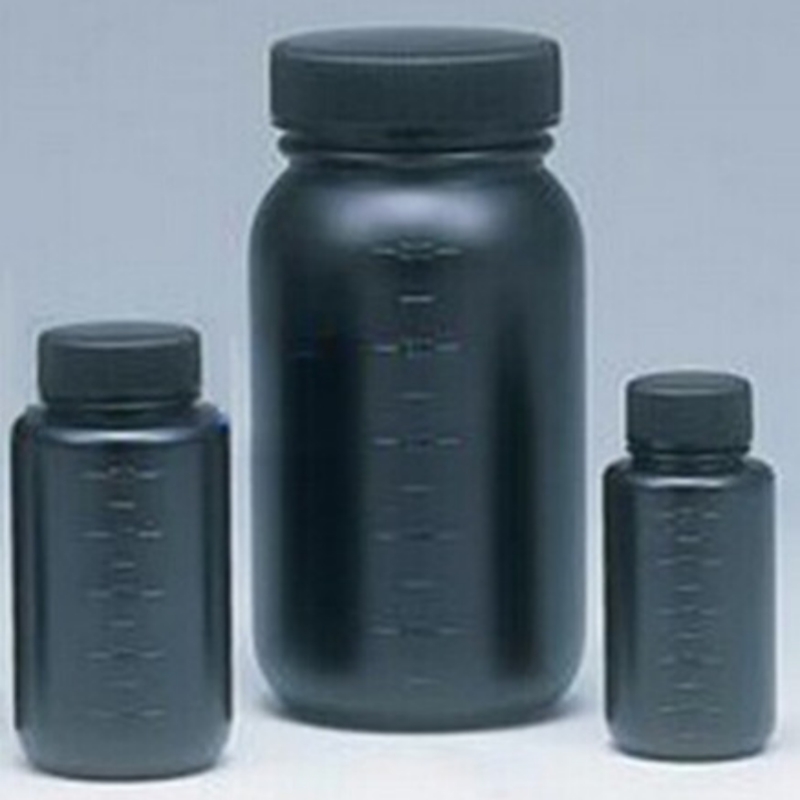Carboxyl-modified blue fluorescent monodisperse polystyrene microspheres provide optimized fluorescence intensity, superior surface reactivity, and enhanced biomolecule binding. Designed for biomedical imaging and diagnostic applications, they ensure effective signal detection, extended durability, and high adaptability.
Product Overview
Carboxyl-modified blue fluorescent monodisperse polystyrene microspheres are prepared by adding a blue fluorescent dye with an excitation wavelength of 350 nm and an emission wavelength of 420 nm during the synthesis of polystyrene microspheres, followed by carboxyl group modification. These microspheres have uniform particle size distribution, and the encapsulated fluorescent dye is effectively protected, preventing fluorescence quenching and reducing the impact of environmental factors on fluorescence intensity. The particle size can be customized based on application requirements, making these microspheres suitable for various experimental and application scenarios.
Key Features
- Monodispersity: The microspheres exhibit a uniform particle size distribution, ensuring consistency and repeatability in experimental results.
- Fluorescence Properties: The microspheres contain a high fluorescence dye, which is effectively encapsulated inside the microsphere to prevent fluorescence quenching. The fluorescence emission is stable and unaffected by changes in the external medium.
- Adjustable Particle Size: The particle size can be controlled during synthesis, allowing for the production of microspheres with different sizes to meet diverse application needs.
- High Stability: The microspheres demonstrate excellent chemical and physical stability, making them suitable for use in various experimental environments and conditions.
Applications
- Biomedical Research: These microspheres are ideal for cell labeling, imaging, and as carriers for drug delivery systems. They are widely used in cell biology, molecular biology, and biochemical research.
- High-Throughput Drug Screening: As signal carriers, these microspheres aid in rapidly screening large numbers of compounds to identify potential drug candidates.
- Medical Diagnostics: These microspheres are useful in immunoassays, detection, and other diagnostic applications. The surface can retain its original functional groups, ensuring no interference with experimental results.
- Tracer Studies: Suitable for tracer studies such as phagocytosis, pore size measurements, and other biological research, monitoring cellular uptake processes.
| Item | Parameter |
| Solvent | Water |
| Solid Content | 1% |
 new material
new material

